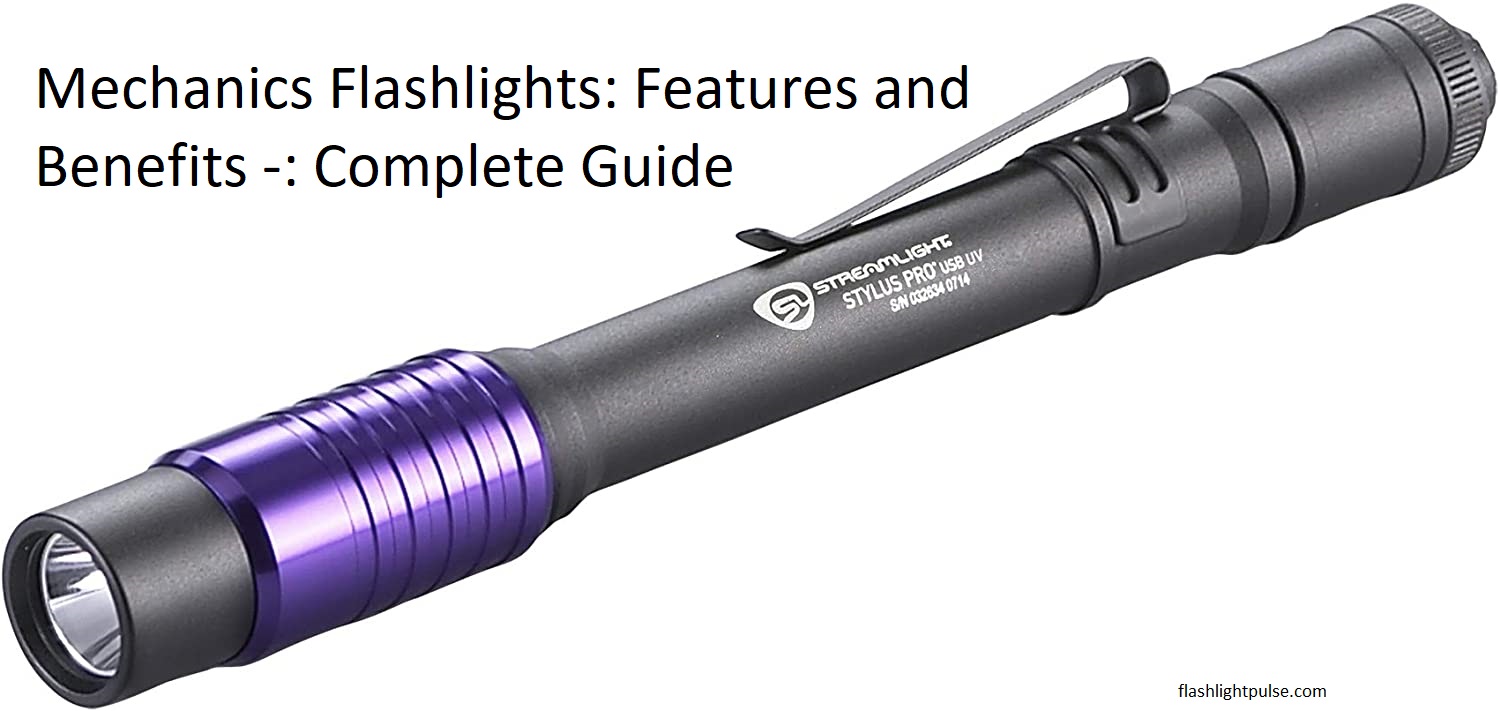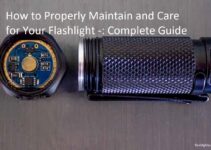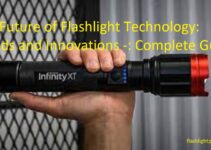Are you a mechanic looking for the right flashlight to help you work better? Discover the features and benefits of Mechanics Flashlights in this comprehensive guide.
Explore why it’s so important for mechanics to have a reliable, high-performance flashlight and how to pick one that meets your needs. You won’t want to miss this!
In this guide, we’ll explore the features and benefits of mechanics flashlights – a perfect tool for working in dimly lit areas. Flashlights come with a wide range of features and benefits that make them an ideal tool for mechanics, electricians, and other professionals who work in dark areas. Some of the main types of mechanic flashlights are LED flashlights, headlamps, lanterns, and adjustable beam flashlights.
No matter what type of job you’re doing, you probably need a reliable source of light to do it properly and safely. Whether you’re working indoors or outdoors or even performing maintenance on machinery, mechanics flashlights can provide the illumination that’s needed to complete tasks quickly and accurately. In this guide we’ll discuss the features and benefits of each type of flashlight as well as important tips for choosing the right one for your job.

Explanation of Mechanics Flashlights
The term “mechanic’s flashlight” is a catch-all phrase that can refer to any number of different types of flashlights. Whether you’re a professional mechanic, an outdoor enthusiast or simply looking for a reliable light source around the house, it can be difficult to figure out which mechanics flashlight will best suit your needs. With the help of this guide, we’ll take you through all the features and benefits you can expect from this type of flashlight.
Mechanic’s flashlights are designed to provide focused and bright light in challenging environments. They come with various lighting options ranging from standard bulbs to high efficiency LED lights, enabling users to remain prepared for many different conditions during their work or leisure activities. The most common materials used for these flashlights are aluminum, stainless steel and plastic, as well as lesser metals that are less prone to rust or corrosion like nickel-plated brass or titanium.
Many also feature impact-resistant lenses that protect the bulbs from breakage due to drops and falls. Some models also come with an adjustable beam angle which allows users to adjust the direction of light in order to further focus the beam behind them when they need more visibility while they work. Additionally, several models have a built-in safety lock which prevents them from turning on inadvertently when stored inside pockets or bags—great for protecting against sparking danger in a highly combustible working environment such as the garage.
Importance of Mechanics Flashlights

Having a strong, dependable and reliable flashlight is paramount when performing tasks in dark areas or at night. Mechanics flashlights are an especially important tool for mechanics who are faced with difficult jobs in heavy machinery and equipment. The purpose of the mechanics flashlight is to provide a wide beam of light that illuminates highly specific areas for optimal problem-solving.
The importance of a good mechanics flashlight cannot be overstated as it directly relates to the quality of repair and maintenance work that can be performed on vehicles, tools and other mechanical objects. Mechanics flashlights provide features such as variable focus beam strength, multiple light levels and ergonomic designs for maximum comfort, making them indispensable tools for professionals in this field.
Additionally, some mechanics flashlights come with removable filters to protect user eyes against the bright lights generated by highly reflective surfaces, hard angles of metal machinery or objects with infrared properties. Some models also include attachments like clips or magnetic bases which can help secure the position of the flashlight while doing precise repairs or maintenance tasks onsite.
Overview of the Guide

This guide has been written to help mechanics, technicians, carpenters and other professionals better understand the features and benefits of different types of flashlights. From LED to halogen flashlights, this guide will explore the advantage of each type and will provide tips when considering which might be best for your needs. It is important that you consider how often you plan on using the flashlight and what type of work environment you typically encounter.
We’ll cover topics such as bulb types and luminosity, beam length and width, weight issues, battery life expectancy, waterproofing capabilities, additional features such as glare reduction lenses or attached clips for more mobility options. Everything from budget picks to top-of-the-line models will be discussed to give you the confidence that the flashlight you choose serves your needs without breaking the bank.
Our guide will also provide safety tips such as avoiding any type that flickers or runs hot in your hands. We’ll discuss lens quality specs so you can determine what specific specs are best suited to your needs depending on light intensity levels or job applications. In addition we’ll include case studies highlighting how certain lamps have improved workplace effectiveness in other organizations with similar needs addressing long term durability concerns as well as aesthetics. By understanding this information, you can make a more educated decision when purchasing a flashlight that works best for both your individual budget and usage requirements making sure you get optimal value for money spent.
Key Features of Mechanics Flashlights

Mechanics flashlights come with a range of features that are designed to make it easier for mechanics to use them in different situations. Some of the key features one should look out for when choosing a mechanic’s flashlight include:
- Durability – Mechanics flashlights are designed to be sturdy and capable of handling daily wear and tear, thanks to their robust construction materials such as aluminum and plastic. Choose flashlights with shockproof, impact-resistant designs that will last through hard work and unpredictable impacts.
- Brightness – The level of brightness produced by a mechanic’s flashlight will depend on its lumens rating. Look for high lumens ratings for brighter illumination in dark or poorly lit garages or outdoor spaces.
- Beam type – Many mechanics prefer using focused beams for meticulous tasks, while others prefer flood beams for greater coverage in larger areas. Consider the specifics of your job to choose between the two beam types according to your needs.
- Battery life – Opt for flashlights whose battery life is long enough to support a full day’s work without running out of power; not only will this save you the hassle of having to recharge throughout the day, but it can also be more cost-effective in the long run since you won’t have to replace batteries frequently.
- Lighting modes – Flashlights with multiple lighting modes are ideal since they can be used under different conditions such as night, dusk/dawn and severe weather conditions like rain or fog; look out for options that give you direct access control over different brightness levels as well as SOS distress signals in case you face any roadside emergencies during extended drives away from home or the office!
- Durability
When selecting a mechanics flashlight, it’s important to consider the claims of durability made by the manufacturer. Most flashlights are constructed with some type of synthetic material to protect them from the elements, but some materials resist aging better than others. Look for thick rubber bodies that can withstand drops and water immersion, and an aluminum or stainless steel body which will not rust over time.
It’s also advisable to check which battery type your flashlight uses so that you have an idea of how long your flashlight will last between charges. Many models use long-lasting lithium batteries which can last up to ten years if cared for properly.
It’s also beneficial to look for a construction that is designed to provide shock protection as it will help your flashlight last for many years with minimal maintenance.
Water and Shock Resistance
When it comes to flashlights, water and shock resistance are important features to consider. Flashlights that are constructed with waterproof seals, gaskets and protective coatings help prevent water from entering the flashlight’s internal components, which can cause damage over time.
It is also important to look for a flashlight that is impact-resistant and shockproof – this ensures that it can withstand drops, bumps, and other impact forces. Additionally, the addition of o-ring seals helps keep water out while maintaining an airtight seal on the outside of the flashlight.
All of these protective elements add up to a reliable and long-lasting source of light — ideal for any mechanic’s complex repairs in damp or dusty conditions.
Brightness and Beam Distance
When investing in a new mechanic’s flashlight, you need to take brightness and the beam distance into consideration. Knowing how far the beam of light can reach will help you make sure that your flashlight is powerful enough to light up dark, hard-to-reach spaces.
The brightness of a flashlight is measured in lumens, which indicate how bright the light produced is. Generally, brighter flashlights with higher lumen ratings tend to be larger and lack as narrow of a beam as smaller flashlights. As a result, when selecting a mechanic’s flashlight for tight spaces or automotive work, you should look for lights that have an output between 500 and 800 lumens. A higher lumen rating increases visibility at greater distances.
Another important factor to consider when purchasing mechanic’s flashlights is the beams’ distance measurement measurements, which is measured in meters. Look for models that have throwing capabilities between 80 and 200 meters if a longer reach or greater range of vision is necessary for your work projects.
Battery Life
Most flashlights are powered by either disposable or rechargeable batteries. Disposable batteries typically last for a couple of hours on a single charge and must then be replaced when depleted. Rechargeable models, on the other hand, are capable of lasting much longer, but their battery life can vary depending on use, brand and battery type.
High-powered flashlights may require larger and more powerful batteries that have shorter shelf lives and can get expensive to replace. When shopping for a flashlight, make sure to look into the battery life to ensure that it meets your needs.
Benefits of Mechanics Flashlights
Beyond the features that make a mechanics flashlight the right choice for any project, there are also many benefits to choosing a mechanics flashlight for your needs. Some of the primary benefits of having a mechanics flashlight include:
- Improved Visibility – Home repairs and auto maintenance demand that you have access to clear and focused light. Being able to see what you’re doing, even in tight spaces, is important. Mechanics flashlights allow you to do just that with their bright LED light and adjustable zoom lens.
- Improved Safety– Working in tight spaces or on complex tasks can lead to safety issues if your vision or lighting isn’t up to par. Mechanics flashlights reduce accidents by making sure you can clearly see your area of work before starting anything. This will give you more time to prepare for and plan any task before it begins.
- Long Lasting – Because mechanics flashlights are built from durable materials, they last longer than most other types of flashlights available in the market today. Their intense LEDs don’t need frequent replacing either and many have adjustable brightness settings so you can save battery power when needed.
- Versatile – No matter what project you need illumination for, a Mechanics flashlight will be ready for the job. They are designed to help with difficult tasks like engine repair as well as allowing comfortable reading Light indoors during power outages or after-dark camping trips. You can take these lights anywhere without worrying about them breaking or needing specialized batteries all thanks to their versatile design features like weatherproof casing and LED lighting technology that makes them reliable anywhere they are used.
Increased Safety
The use of a mechanics flashlight provides an added level of safety due to the added light. Mechanics often work in dark, cramped spaces with mirrors or other surfaces that may be difficult to see clearly. Having a good flashlight within reach can prevent an accident or injury by allowing the user to efficiently identify potential hazards and make sure that they are being addressed properly.
Additionally, using a reliable LED flashlight is essential when attempting to clearly assess changes or modifications in a briefly lit environment.
Using an LED mechanical light also helps maintain accuracy and overall productivity in the workplace. This type of flashlight produces steady, clear lighting throughout its runtime while helping keep visibility consistent even after long hours of operation. Proper illumination from quality mechanics flashlights help you evaluate components quickly and accurately, allowing you to focus on every detail without having to stop and find a suitable source for lighting up your workspace during moments of difficulty or complexity.
Enhanced Visibility
The right flashlight will provide enhanced visibility in all kinds of environments. Light output and beam distance are two key characteristics to look for when attempting to achieve maximum illumination in constrained spaces. Flashlights designed specifically for mechanics also come with features that deliver the best visibility possible, including adjustable diopter objectives, lens lightrings, side shell lighting and floodlighting.
Adjustable diopter objectives are convenient features that allow you to quickly adjust the beam width of the light depending on your needs. This allows you to concentrate the light beam down more narrowly or widen it for better coverage of a wider area. Lens lightrings assist in illuminating parts located directly beneath the flashlight, which is especially helpful when inspecting engine compartments and similar dark or tight spaces. Similarly, side shell lighting can be invaluable when trying to access a small part from an awkward angle as it illuminates any shadowed areas for better visibility. Finally, floodlighting illuminates a wide area around the worklight and is helpful for quick inspections of larger areas like engine bays or interiors where multiple components have to be surveyed simultaneously.
Conclusion
In conclusion, having a reliable and high-powered flashlight can improve the capability of mechanics in any situation. From exploring auto parts in dark corners and truck engines to engine oil changes and tire rotations, mechanics rely on portable lighting tools to make their job easier. Flashlights can provide better visibility in all types of conditions, allowing for easier access to inaccessible areas.
Additionally, modern flashlights offer many features that can make maintenance work faster, such as adjustable beam intensity, focused beams and long-lasting power sources. With a wide range of options available to suit different work environments, mechanics can equip themselves with light sources that will help them get the job done effectively in any condition.
FAQs
What are the features of flashlight?
Some common features of a flashlight include a light source, a battery or power source, a switch or button to turn the light on and off, and sometimes different modes or settings for the light such as high, low, or strobe.
What are the benefits of flashlight?
Flashlights can provide illumination in dark or low-light environments, allowing for increased visibility and safety. They can also be useful in emergencies, power outages, and outdoor activities such as camping or hiking.
What is the function and importance of flashlight?
The function of a flashlight is to provide illumination in dark or low-light environments. The importance of a flashlight lies in its ability to increase visibility and safety, as well as its usefulness in emergencies and outdoor activities.
What are the mechanical components of a flashlight?
The mechanical components of a flashlight typically include a bulb or LED, a reflector or lens to focus and direct the light, a battery or power source, and a switch or button to turn the light on and off.
How do you use flashlight feature?
To use the flashlight feature, simply turn on the switch or button to activate the light. Some flashlights may have different modes or settings that can be cycled through by pressing the button multiple times.
How does a flashlight work?
A flashlight works by converting electrical energy from a battery or power source into light energy through a bulb or LED. The reflector or lens focuses and directs the light, and the switch or button controls the flow of electricity to turn the light on and off.
What are other uses for a flashlight?
In addition to providing illumination, flashlights can be used as a signaling device, a self-defense tool, and a tool for inspecting and examining objects in low-light conditions.
What is commonly used in flashlights?
LEDs (Light Emitting Diodes) are commonly used in flashlights due to their efficiency, durability, and long lifespan. They also produce less heat than traditional incandescent bulbs.
What are the three types of energy used in a flashlight?
The three types of energy used in a flashlight are chemical energy (stored in the battery or power source), electrical energy (used to power the bulb or LED), and light energy (produced by the bulb or LED).
What is the purpose of a flashlight in security?
In security, flashlights can be used to illuminate and identify potential threats or suspicious activity in low-light or dark environments. They can also be used to temporarily blind or disorient an attacker, providing an opportunity to escape or defend oneself.
See More
- Best 18650 for flashlight 2023
- Best aa flashlight 2023
- Best camping flashlight 2023
- Best edc flashlight 2023
- Best flashlight for emergencies 2023


